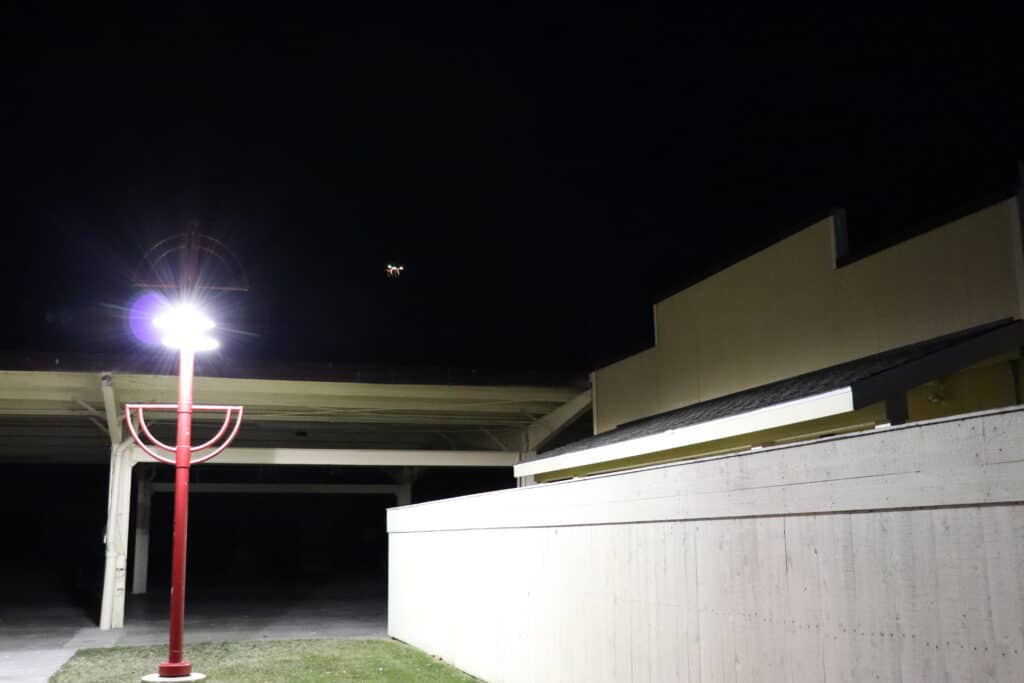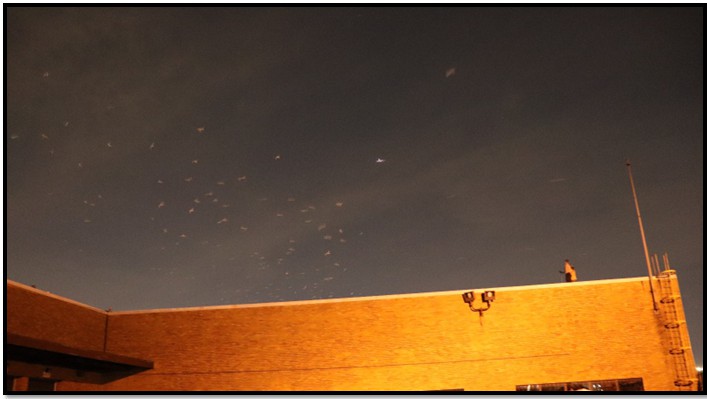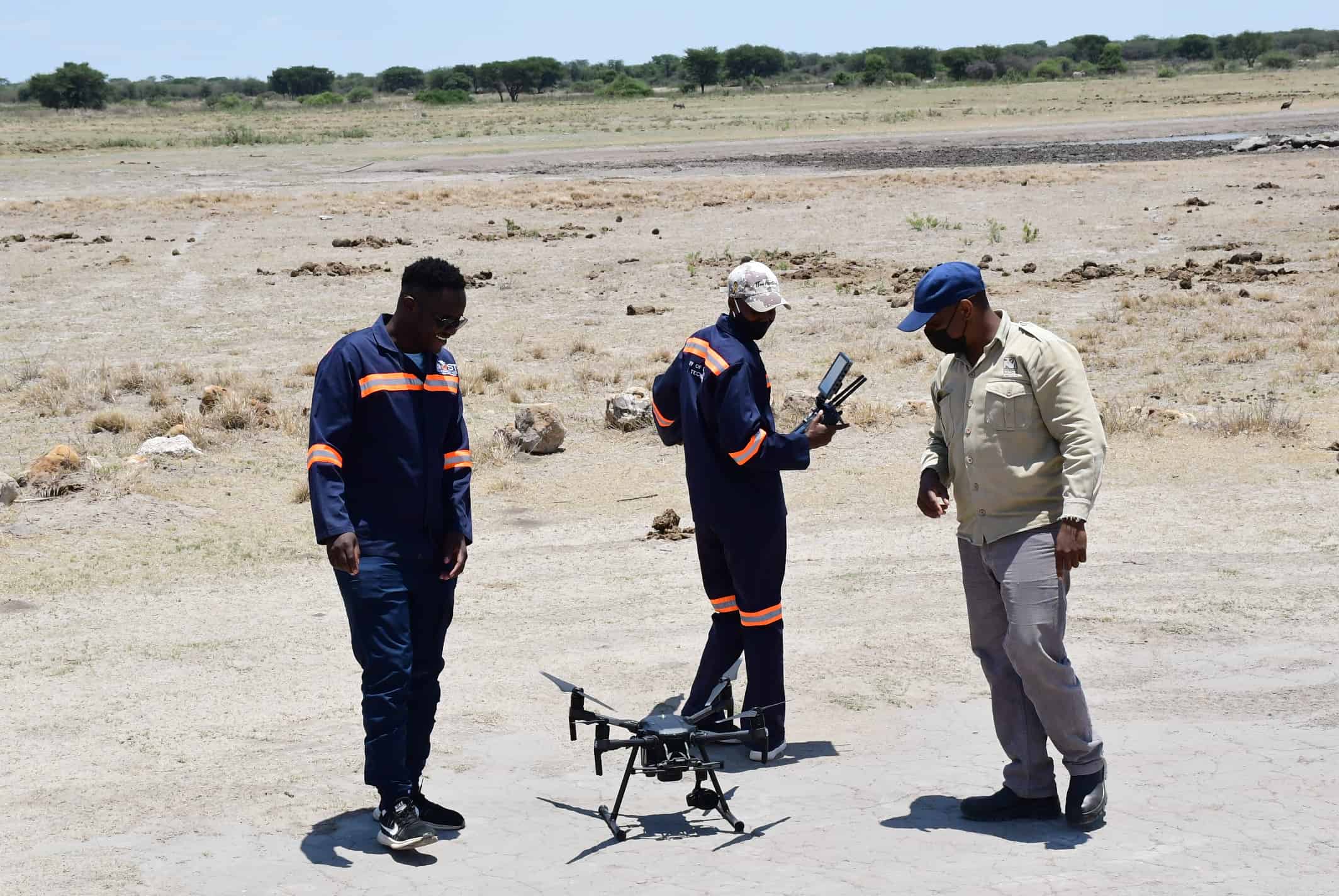Share this article
Wildlife Featured in this article
- ring-billed gulls
- herring gulls
WSB: Drones can help scare gulls away
Gulls can cause huge problems for wildlife managers in some cities. When they nest in large colonies near airports, these urban-adapted, roof-nesting birds pose a risk of collision with planes. In other areas, they may just make a mess or become a nuisance.
Wildlife managers often try to chase the birds off for the long term, but that’s not always easy.
“Some of this work is actually pretty dangerous for biologists to do,” said TWS member Morgan Pfeiffer, a research wildlife biologist with the U.S. Department of Agriculture’s National Wildlife Research Center. “I’ve heard stories of people falling through roofs.”
Species like ring-billed (Larus delawarensis) and herring gulls (L. argentatus) naturally nest on the ground in small, offshore islands free of predators. But they have adapted well to urban areas, especially along the ocean or in the Great Lakes region. There, they use rooftops to nest in large colonies—some with as many as 1,000 breeding pairs.
Pfeiffer and her colleagues decided to explore using drones to chase the gulls off from areas where they might create conflict or endanger humans.
For a study published recently in the Wildlife Society Bulletin, she and her colleagues tested whether drones could scare gulls from rooftops in Sandusky, Ohio, and near Chicago O’Hare International Airport in Illinois, getting them to leave the area before spring nesting season when they gather in large numbers.

Night frights for night flights
They went first to Sandusky, flying a drone over a picnic shelter with a metal roof where gulls nested. They decided to test the method at night when gulls rest but easily get spooked, since predators like raccoons (Procyon lotor) and red foxes (Vulpes vulpes) usually attack them at this time.
“Gulls are actually ill-adapted to dealing with predators at night,” Pfeiffer said. “We wanted to see if we could scare them at night to enhance how scary the [drone] is to the gulls.”
The idea was that if they could make the place unsavory enough for them, the gulls may decide to build their nests elsewhere.
The trouble in Sandusky, they realized, was that the weather was often too windy or rainy to fly the drone. On clearer, calmer nights, the gulls weren’t always on the rooftop.
When the gulls were around, though, the drones did seem to scare them away. And they didn’t attack the flying machines, either, as they’ve been known to do.
Challenges in Chicago
In Chicago, the team had a different set of challenges. For one, their test site there was close enough to O’Hare that they needed extra authorization to fly.
Here, they tested the method against a colony of about 130 gulls, both herring and ring-billed. These city birds were reticent at first. “It took a few dive-bombing approaches before they felt the need to fly,” Pfeiffer said.
But finally, the whole colony took off into a cloud of birds. “It took almost 15 minutes of me flying up there back and forth, trying to defend the roof, for them to decide ‘Let’s move elsewhere.’”
The trouble was, they all just landed on a neighboring building. “From this perspective, we just moved the problem over,” Pfeiffer said.
The team had even more challenges—including a crashed drone at one point that fell out of the sky. But Pfeiffer still thinks the technique can be useful in cases where wildlife managers, or even building owners, want to move birds away from their building for a day or two.
And while the area around O’Hare would be difficult to work with due to the number of buildings around the airport, the technique may work in places with fewer ideal gull nesting locations. If scared off, they might go farther away to nest.
In the future, Pfeiffer hopes to see if flying the drones over gull colonies with eggs might make more of a difference. For this research, the team couldn’t fly drones once eggs were laid, since it would have required permits under the Migratory Bird Treaty Act.
This article features research that was published in a TWS peer-reviewed journal. Individual online access to all TWS journal articles is a benefit of membership. Join TWS now to read the latest in wildlife research.
Header Image: A flock of gulls recently scared off a roof by a drone. Credit: USDA Wildlife Services








